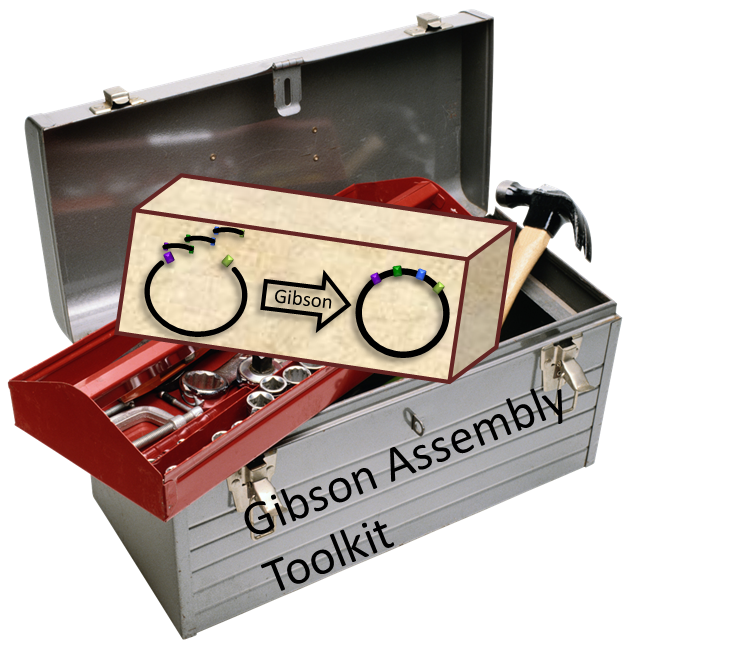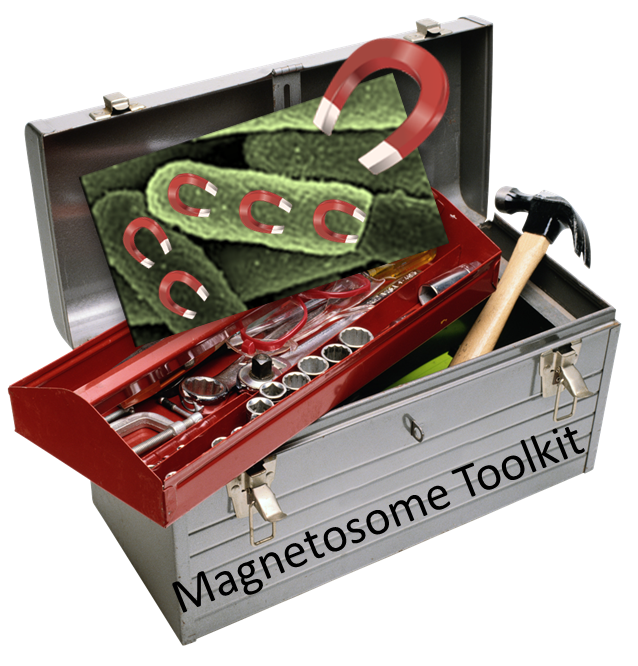Team:Washington/Magnetosomes/Background
From 2011.igem.org
(→Gibson Assembly Toolkit) |
|||
| Line 15: | Line 15: | ||
[[File:Igem2011 GibsonToolkit.png|left|300px|link=https://2011.igem.org/Team:Washington/Magnetosomes/GibsonVectors]] | [[File:Igem2011 GibsonToolkit.png|left|300px|link=https://2011.igem.org/Team:Washington/Magnetosomes/GibsonVectors]] | ||
;'''What's in the Gibson Assembly Toolkit?'''<br/> | ;'''What's in the Gibson Assembly Toolkit?'''<br/> | ||
| - | + | *Five plasmid backbones | |
| - | + | *pGA1A3, pGA1C3, pGA3K3, pGA4A5, pGA4C5 | |
| + | <br> | ||
| + | |||
| + | <br/> | ||
| + | <br/> | ||
| + | <br/> | ||
| + | <br/> | ||
| + | <br/> | ||
| + | <br/> | ||
| + | <br/> | ||
| + | <br/> | ||
| + | <br/> | ||
=== Magnetosome Toolkit === | === Magnetosome Toolkit === | ||
In addition, we were also ambitious about assembling a large gene-construct of over 16 kb. Therefore, utilizing our pGA vectors and Gibson cloning methods, the [https://2011.igem.org/Team:Washington/Magnetosomes/Magnet_Toolkit Magnetosome Toolkit] was developed with the goal to build magnetic ''E.Coli''; a novel characteristic expressed solely by magnetotactic bacteria, such as ''Magnetospirillum magneticum'' strain AMB-1 | In addition, we were also ambitious about assembling a large gene-construct of over 16 kb. Therefore, utilizing our pGA vectors and Gibson cloning methods, the [https://2011.igem.org/Team:Washington/Magnetosomes/Magnet_Toolkit Magnetosome Toolkit] was developed with the goal to build magnetic ''E.Coli''; a novel characteristic expressed solely by magnetotactic bacteria, such as ''Magnetospirillum magneticum'' strain AMB-1 | ||
Revision as of 23:35, 22 September 2011
iGEM Toolkits
As with the expansion of the iGEM competition, many iGEM teams have started to investigate the possibility of working with large-scale genomes. Large-scale gene manipulation often requires the use of tools which allow multiple gene inserts as to bring the cloning project from single gene level to a multiple gene level. However, the current BioBrick standard vectors available through iGEM are not designed for multiple-insert cloning. Therefore, the UW iGEM team decided to research methods to improve cloning efficiency and as a result, two "toolkits" were submitted to the registry.
Gibson Assembly Toolkit
As a continuation of the 2010 UW IGEM project, this year we developed and submitted several plasmid backbones that are Gibson cloning method friendly-- aka pGA vectors. It is called the Gibson Assembly Toolkit
- What's in the Gibson Assembly Toolkit?
- Five plasmid backbones
- pGA1A3, pGA1C3, pGA3K3, pGA4A5, pGA4C5
Magnetosome Toolkit
In addition, we were also ambitious about assembling a large gene-construct of over 16 kb. Therefore, utilizing our pGA vectors and Gibson cloning methods, the Magnetosome Toolkit was developed with the goal to build magnetic E.Coli; a novel characteristic expressed solely by magnetotactic bacteria, such as Magnetospirillum magneticum strain AMB-1
What’s in the Magnetosome Toolkit?
- A set of the 18 essential genes for the various steps of magnetosome formation.
- Our favorite genes in pGA vectors
- A table compiling individual gene functions from our literature search
 "
"




